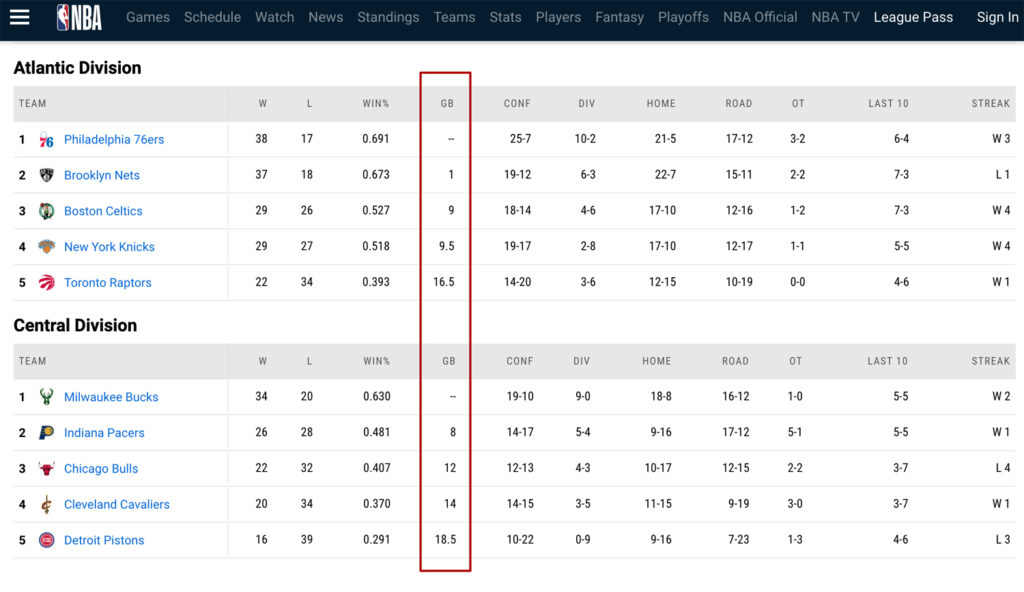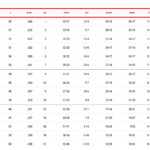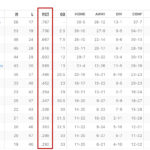All major sports leagues use a ranking system to sort their teams from best to worst throughout the season.
While hockey uses a point system, most other leagues - including the NBA - use the GB and PCT system.
That is, teams are ranked based on their winning percentage, hence the PCT acronym.
However, it can be confusing to figure out how many wins are needed for teams to catch up to first place, based on percentage only.
Therefore, the NBA includes the GB column to make it more palatable.
What Does GB Mean in Basketball?
GB is an acronym for games back or games behind in the NBA standings. The value indicates how many games each team trails their first-place, divisional rival. Games Back values shift in increments of 0.5 per game played, per team.
Since every team plays an equal number of games by season end, it’s impossible for a team to trail another in games back with more wins earned.
However, this can happen mid-season while teams have played an unequal number of games due to league scheduling.
Does 0 GB mean teams are equal in PCT (Winning Percentage)?
Only teams with the same number of wins and games played will both be equal in PCT and be 0 games back.
However, it is possible to be 0 games back and have a different win percentage (PCT).
Let’s take the following scenario:
WEEK 4
BULLS: 6-2 (0.750 PCT, - GB)
PACERS: 4-4 (0.500 PCT, 2.0 GB)
WEEK 5
BULLS: 6-2 (0.750 PCT, - GB)
PACERS: 8-4 (0.667 PCT, - GB)
In the example above, the Pacers reduced their Games Back against the Bulls down to 0 by winning four games straight.
However, the Bulls remain ahead in the standings with a higher winning percentage (PCT). Although the Bulls have less wins, they’ve also played less games (4 in-hand).
The only advantage for the Pacers in the standings is that they have 2 more banked wins compared to the Bulls.
The GB-PCT dilemma will only resolve itself once the season comes to an end and all teams have played an equal number of games.
Can a team be equal to first place in PCT, but still trail in Games Behind?
This is another interesting situation and can happen while the teams have played an unequal number of games.
Let’s look at a hypothetical situation in the NBA standings:
BULLS: 4-0 (1.000 PCT, - GB)
PACERS: 2-0 (1.000 PCT, 1.0 GB)
While both teams have remained undefeated since the start of the season, the Bulls are ahead by 1.0GB in the standings.
That’s because the Bulls have secured the extra victories while having played two more games than the Pacers.
Until the Pacers play those games in-hand, we’re not certain as to what their record yet will be.
Now that we’ve covered these two GB-PCT scenarios, let’s demonstrate how the NBA and other basketball leagues calculate Games Back.
How to calculate Games Back?
The simplest way to calculate Games Back between two teams is to separate their wins and losses.
This can be done using the first-place team as the control group, or any other team for that matter.
Perhaps you want to verify how many games your team needs to catch up a certain due to playoff implications.
In any case, we’ll use the example below for context:
CELTICS: 30-25 (W/L)
KNICKS: 26-28 (W/L)
Win Differential:
Wins for Higher Ranked – Wins for Lower Ranked
30-26 = 4
Games Behind for Wins: Win Differential/2
4/2 = 2
Loss Differential:
Losses for Lower Ranked – Losses for Higher Ranked
28-25 = 3
Games Behind for Losses: Loss Differential/2
3/2 = 1.5
Games Back = Games Behind for Wins + Games Behind for Losses
Games Back = 2 + 1.5 = 3.5
What does a half value (0.5) mean in Games Back?
As I noted before, Games Back values shift in increments of 0.5 per game played, per team.
When you see the GB value with a half number, this is an indication that teams have played an unequal number of games. More specifically, the total number of games played between both teams amounts to an uneven number (i.e: 1, 3, 5 etc.).
In a previous example, we demonstrated the half value:
CELTICS: 30-25 (W/L)
KNICKS: 26-28 (W/L)
You can quickly add up that the Celtics played 55 games and the Knicks played 54 games. The total between the two is 109 and therefore can expect the Games Back number with a half value: 3.5 GB.
As a note, by the end of the season, every team trailing their first-place rival will finish with a whole-number GB (i.e. 3.0, 4.0, etc.).
Final Thoughts
The Games Back column is very useful when approaching season end.
It quickly allows you to determine if a team is mathematically able to catch up to a rival in the standings.
Essentially, you want to know if your team can still qualify for the playoffs or if the season is a wash.
For teams already in the playoff mix, maybe there’s hope for them to gain home court advantage in the first round of playoffs.
It is possible for two teams to finish equal in the standings with the exact same winning percentage and 0 games back.
When that happens, the NBA uses a tie-breaking system described in their Playoff Tie-Break Procedures found at the bottom of the standings page.
If you’re a fan of other “big 4” sports, you’ll notice the Games Behind column in MLB Standings too.
The major difference is that the MLB plays close to double the number of games compared to the NBA season.
The Games Back in baseball isn’t as insurmountable as in basketball.
Regardless, your team is better off ahead than behind in the standings. Playing catch up at season end is not usually a recipe for success.
Just be aware that team coaches and managers is on top of the GB stat to attempt a final playoff push.






